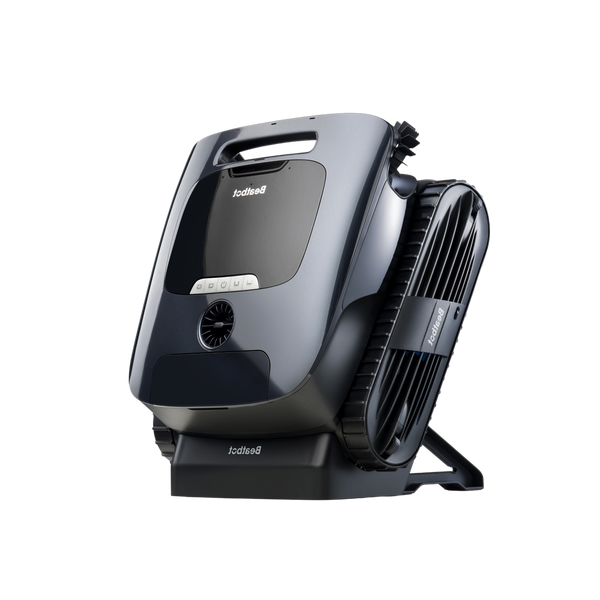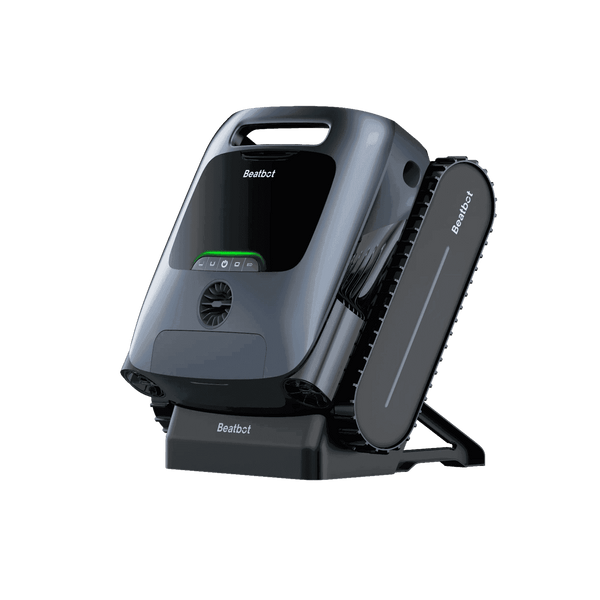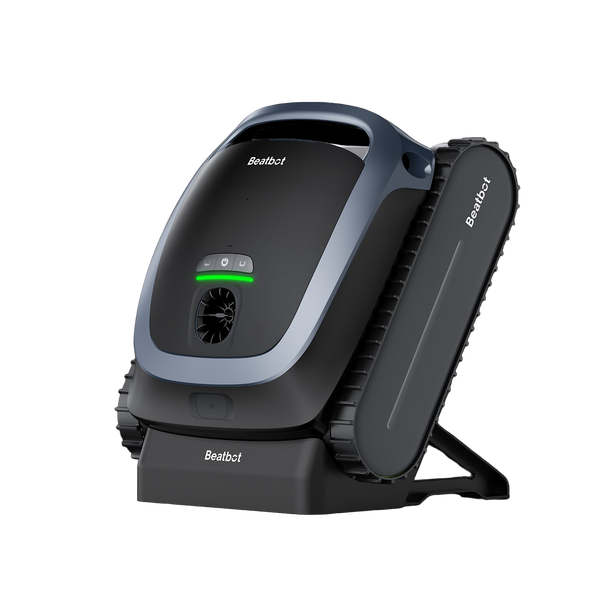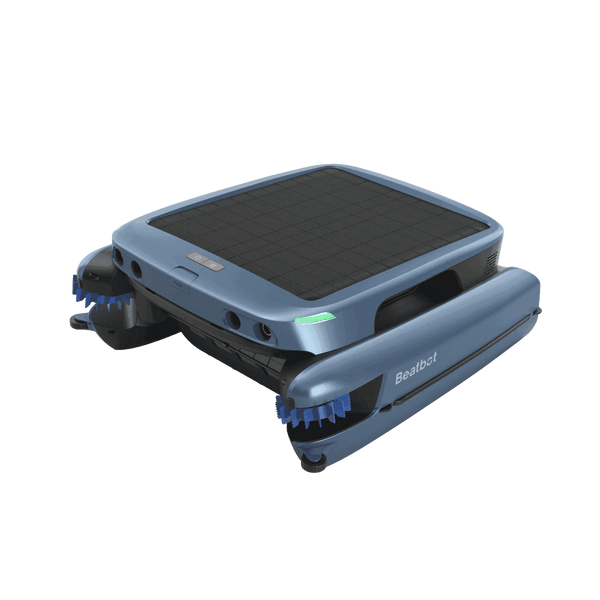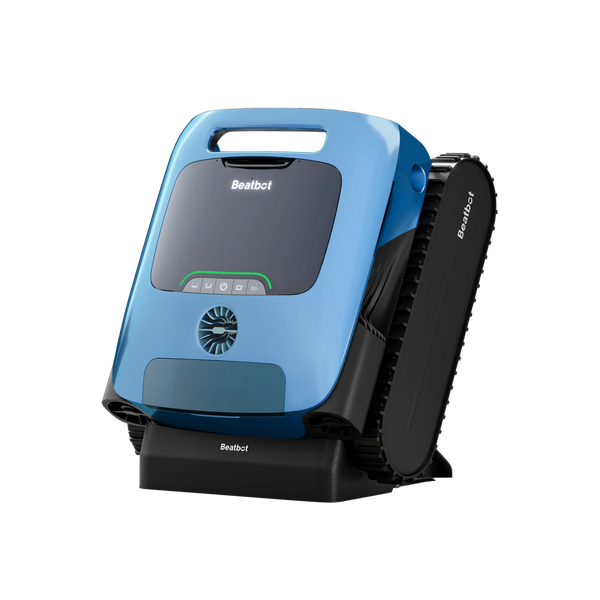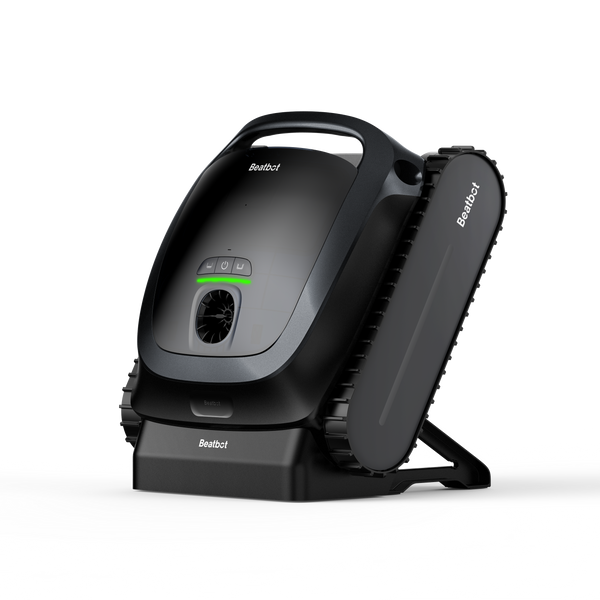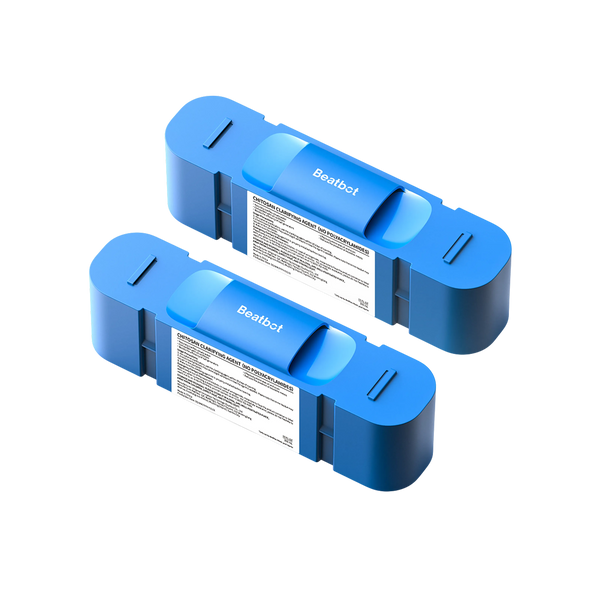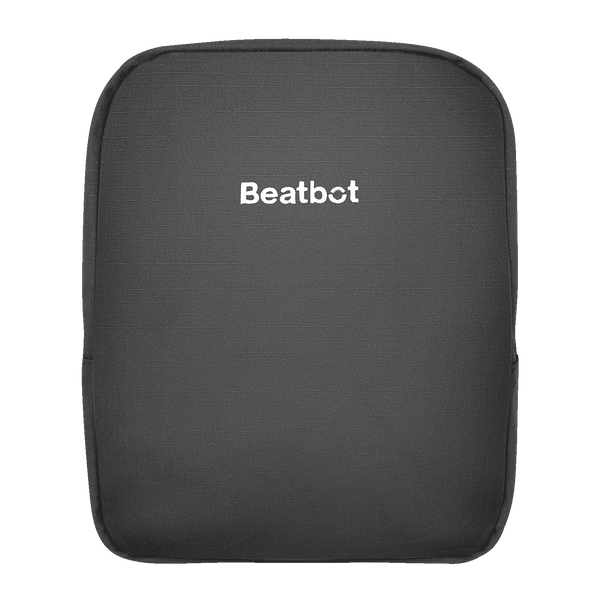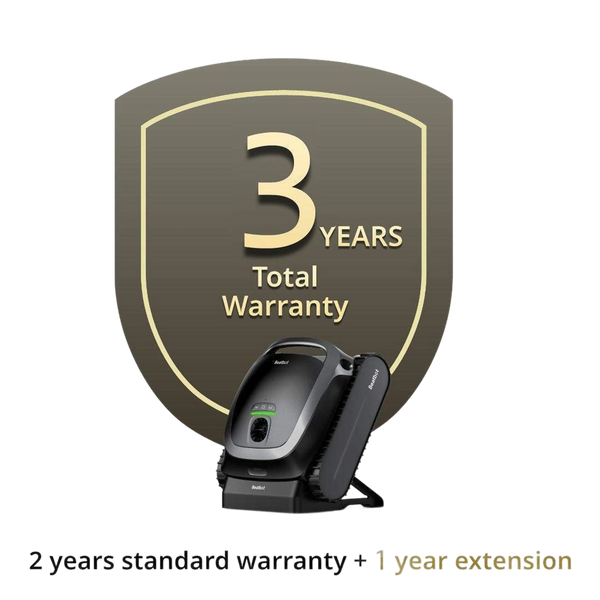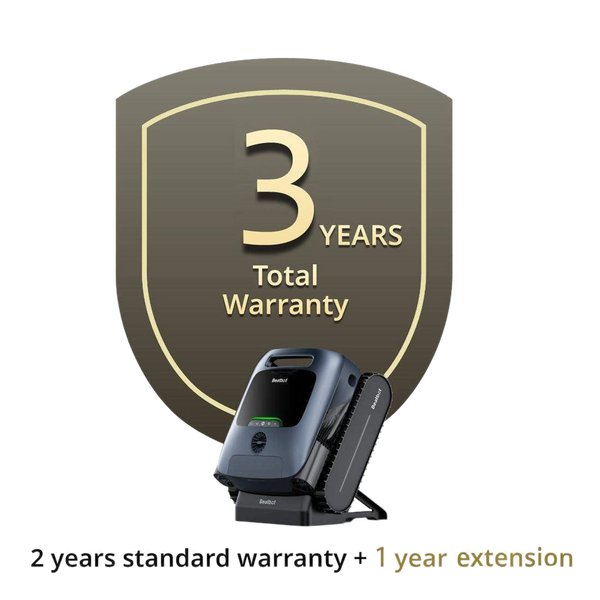How Do Pool Robot Cleaners Work
Not too long ago, it took a lot of time and effort to clean a pool by hand. Homeowners had to skim leaves, scrub walls, and carefully measure chemicals. They often spent their weekends just trying to keep the water clear and safe.
That is no longer true today. As smart home technology has improved, robotic pool cleaners have become a useful and effective option. These machines do the hardest parts of pool maintenance, making it easy and reliable to keep pools clean.
The market is reacting quickly. In 2024, North America is expected to make up about 36% of the global market for robotic pool cleaners. This shows how popular these time-saving tools are becoming.
Robotic pool cleaners do a great job of cleaning and cut down on the need for harsh chemicals and manual labor. For people who own pools, the end result is clear: cleaner water and more time to relax and enjoy their pool.
How a robotic pool cleaner does its job
A robotic pool cleaner is a vacuum that works on its own and moves around your pool. It gets its power from electricity, either through a low-voltage cable or a built-in rechargeable battery that runs the motor and pump. When turned on in the water, it moves around the floor and walls on wheels or tracks. The brushes that spin scrub away dirt and algae, and the suction pump picks up trash and sends it to an internal filter. The robot's movement is controlled by sensors and a microprocessor to make cleaning faster.
1. Intelligent Navigation Systems
Modern pool robots use smart sensors and algorithms to do a good job of cleaning. Many models start by using gyroscopes or accelerometers to scan the pool's layout and figure out the best way to clean it. Some high-tech units use LiDAR or built-in cameras to make a 3D map of the pool and change their route in real time. This makes sure that all areas are covered without leaving any out or going over the same ones again.
2. Cleaning and running the cycle
The robot moves in patterns across the pool floor, up walls, and along the waterline while cleaning. Depending on the size of the pool, most cycles last between three and five hours. Some models turn off on their own when they're done, or they go back to the wall if they're battery-powered. You just take the robot out and empty its filter after cleaning it.

Important Parts Inside a Robotic Pool Cleaner
Like any other machine that works well, it needs a mix of internal parts, each of which has a specific job to do to keep the system running smoothly. These hidden parts, like the motor that makes it move and the sensors that help it find its way, are what make the robot come to life. Knowing how they work not only satisfies your curiosity, but it also helps you choose or take care of your cleaner in a smarter way.
1. The Electric Motor And Drive System
A sealed low-voltage motor powers every robotic cleaner. This motor moves the robot and sucks up dirt. These motors turn the internal brushes and move the wheels or tracks. Some advanced units have two or three motors to make them more agile and accurate when turning.
Resin or O-ring seals keep the motors completely waterproof, which protects the electronics inside. Even though they work well, they don't use much electricity, so they are a cheap way to keep your pool clean.
2. System For Pumping And Sucking
An internal impeller pump makes suction by pulling water through the bottom intake and lifting debris and small particles off the surface of the pool. The onboard filter cleans the water as it passes through. Sometimes, directional jets help with propulsion or stability.
You need high-powered pumps to climb walls and deal with tough materials like algae or sand. Most of the time, premium models have stronger suction power for bigger pools or heavy debris.
3. Collecting Debris And Filtering
Each unit has a filter that catches leaves, dust, and other small particles. The goal is to get clean, clear water back into the pool, whether it's with a mesh bag, a cartridge, or a dual-layer filter.
Some cleaners have extra systems that help make the water cleaner while they are cleaning. Cleaning the filter often keeps it working at its best and makes the robot last longer. The Beatbot AquaRefine™ kit is a 3-in-1 clarifier that uses natural ingredients, such as crab shell extract, to bind small particles in the water into bigger clumps. This makes it easier for the filtration system to catch them, which quickly clears up the water.
4. Rollers And Brushes For Scrubbing
The robot's rotating brushes clean the floor and walls by getting rid of dirt and algae. These brushes can be made of rubber, PVC, or foam, and the number and placement of the brushes can change depending on the model.
Dual-brush setups make better contact and clean more aggressively. The design lets the robot safely clean different types of pool surfaces, like concrete, fiberglass, and vinyl.
5. Sensors And A Navigation System
The fact that these cleaners can find their way around smartly is what makes them "robotic." They have sensors like gyroscopes, accelerometers, and sometimes waterline detectors that help them stay on track, climb walls, and avoid obstacles.
Some high-end models use LiDAR or AI-powered cameras to scan the pool in 3D and change their paths on the fly. Some brands, for instance, use hybrid vision systems that combine different sensors to improve coverage and efficiency.
6. Battery And Power Supply
You can buy robotic pool cleaners that are either corded or cordless. Corded models use a transformer to run for as long as they want, while cordless models use rechargeable lithium-ion batteries that last between 1.5 and 3 hours on a single charge.
Premium cordless cleaners can run for up to five hours and have smart docking systems that let the robot go back to the waterline or charging base when it's done cleaning. All units use low-voltage DC power that is safe and doesn't use a lot of energy, no matter what type they are.

What Do Pool Robots Clean?
Robotic pool cleaners do more than just suck up dirt from the bottom of the pool. They are advanced machines that can clean almost every part of a pool. The best units can clean everything from the floor and walls to the hard-to-reach waterline and even the surface.
Cleaning the Floor
The pool floor is where dirt and debris usually settle, so every robotic cleaner starts its job there. The robot's brushes loosen dirt that has stuck to the bottom, like algae or biofilm. At the same time, its strong suction pulls up sand, leaves, and bugs into the onboard filter.
Many robots go over areas with a lot of debris more than once because they have sensors built in that make sure nothing is missed.
Climbing walls and scrubbing the waterline
One of the best things about modern pool robots is that they can climb walls and clean up and down. They use suction power and gripping tracks to climb the sides of the pool and scrub away dirt and grime that builds up along the walls.
High-end models go even further by cleaning all the way to the waterline. Body oils, sunscreen, and other things that float tend to gather here. This area can get an ugly "bathtub ring" if it isn't cleaned properly, but that's not a problem with a good robot.
Steps, benches, and corners
Cleaning the steps of a pool has always been hard, even for people. Not all robots can handle narrow or steep steps, but many newer models can easily get to wide steps, curved coves, and bench areas. These robots can handle complex pool shapes better thanks to adaptive sensors and flexible navigation systems. This makes them better at getting into tight spaces that regular vacuums often miss.
Some manual touch-up may still be needed in pools with very complicated designs, but robotic cleaners make it much less often and less work.
Surface Skimming
Robotic cleaners used to ignore floating debris and let the pool's built-in skimmer do the work. That is changing with the release of new high-end models that can skim surfaces. These machines can work close to the waterline, gliding along the surface to pick up leaves, pollen, and bugs before they sink to the bottom.
This design with two functions makes the robot a full-coverage cleaner that can clean up trash above and below the waterline, which cuts down on the need for manual skimming.
What Robotic Cleaners Really Get Rid Of
Robotic pool cleaners are made to pick up a lot of different kinds of trash, such as:
-
Big things like leaves, acorns, bugs, and flower petals
-
Fine things like sand, dust, silt, and dead algae
Some robotic cleaners even have ultra-fine filters that can catch particles as small as 2 microns, which is almost as good as a pool's main filtration system. This not only makes things easier to see, but it also helps the water flow better and lowers the chance of algae blooms.
Out with the old school. AI Clean Is In
Cleaning a pool the old-fashioned way is a pain. You have to deal with heavy vacuums, tangled hoses, brushing by hand, guessing which chemicals to use, and wasting hours in the hot sun. Even a lot of "automatic" cleaners still crawl around without a plan, miss spots, and get stuck on steps or drains.
The Beatbot AquaSense 2 Ultra pool cleaner vacuum is a next-generation robotic cleaner that will change the way you take care of your pool. It doesn't just clean your pool; it understands it. It's powered by HybridSense™ AI and has a lot of smart engineering.
The AquaSense 2 Ultra starts working as soon as it hits the water. It uses smart path optimization and advanced pool mapping to do this. CleverNav™ scans and learns the shape of your pool, then maps out the best way to clean every surface, including the floor, walls, corners, and even the hard-to-reach waterline, without wasting any time.
And this isn't just about how much coverage you have; it's also about how much power you have. It has a certified suction rate of 13,400 gallons per hour, which means it cleans better than anything else. It can easily get rid of everything from big leaves to tiny particles. This bot won't stop until your pool is clean, even if you add advanced wall climbing and continuous surface cleaning.
The robot can find and adapt to different kinds of trash thanks to HybridSense™ AI. For example, it will automatically change how it acts when it is skimming floating pollen or scrubbing algae that is stuck on. It even has Smart Return, which means that when the battery is low or the job is done, it knows how to get back to the edge of the pool for easy pickup.
With the multi-function Beatbot app, you can control everything from your phone. You can schedule cleanings, keep an eye on progress, or change the cleaning zones with just a few taps.
The AquaSense 2 pserv's not only powerful heavy-duty razor, but also smart. The ClearWater™ system uses 100% natural clarifying agents to get rid of cloudiness and harmful metal ions without using harsh chemicals. It's not just cleaning; it's also making your water better in a safe and long-lasting way.
The best part? This is real 5-in-1 cleaning: it vacuums, brushes, scrubs walls, skims the surface, and makes your water clear, all in one automated cycle. No more tools, guesswork, or work. Simply drop it in, tap the app, and AquaSense will take care of the rest.
FAQs
How does a robotic pool cleaner know where to go in my pool?
Modern robotic pool cleaners use intelligent navigation systems like gyroscopes, accelerometers, and in advanced models, LiDAR or AI cameras. These sensors help the cleaner scan your pool's shape, then create a smart cleaning path that avoids obstacles, prevents overlap, and ensures complete coverage — including hard-to-reach areas like corners and the waterline.
Can robotic pool cleaners handle all types of debris?
Yes, high quality robotic pool cleaners are designed to handle both large and fine debris. They can pick up leaves, acorns, bugs, sand, algae, and even ultra-fine particles like silt or pollen. Some advanced units include dual-layer filters or natural water clarifiers (like Beatbot’s AquaRefine™) that trap particles as small as 2 microns for crystal-clear water.
Will a robotic cleaner work on my pool's walls and steps?
Most modern robotic cleaners can climb walls using suction and traction tracks, and many can scrub all the way to the waterline. Some high-end models, like the Beatbot AquaSense 2 Ultra, can also clean wide steps, benches, and even glide along the pool surface to collect floating debris. However, narrow or steep steps may still require occasional manual touch-up.
What powers a robotic pool cleaner, and how long does it run?
Robotic cleaners use low-voltage electric motors, either through a power cord or a built-in rechargeable lithium-ion battery. Cordless models typically run for 1.5 to 5 hours depending on battery size and cleaning mode. Premium models feature smart docking or return-to-surface systems, making them easy to retrieve and recharge without needing to enter the pool.
